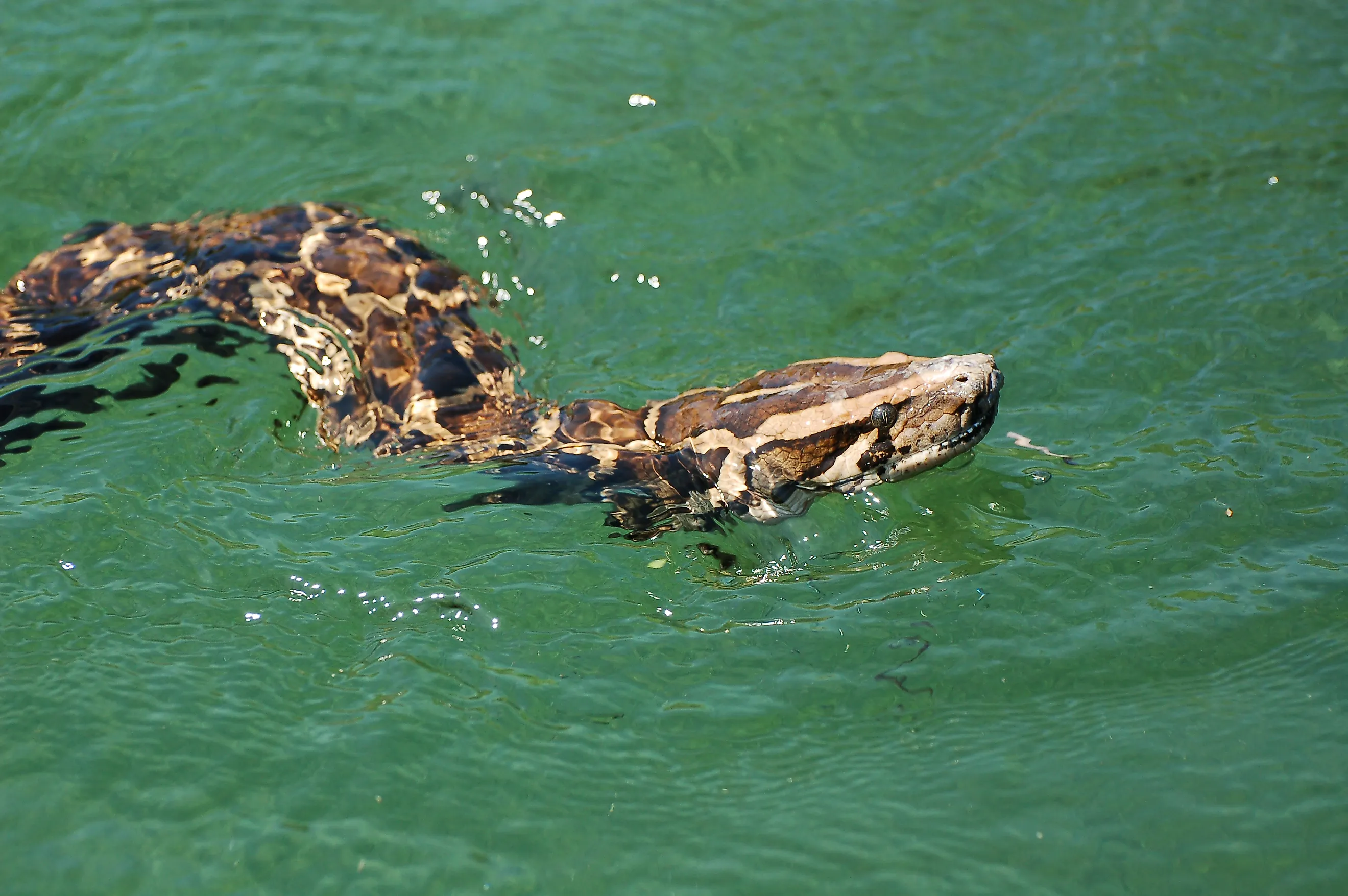
The Most Snake Infested Lakes In Florida
The state of Florida is a hotbed for snake activity. Lush ecosystems spread across a mix of tropical and subtropical climates are tailor-made for these cold-blooded slitherers. There are 46 native species, as well as four invasive species. And even though there are six categories of venomous snakes, bites are rare, and because of decades of research and medical advancements, fatalities are predominately a thing of the past. With that said, it can be a startling experience to come across a snake sunbathing on the shore of a local swimming hole or, even worse, brushing up against one in the water. So proceed with caution around these snake-infested lakes.
The Lakes Of The Everglades
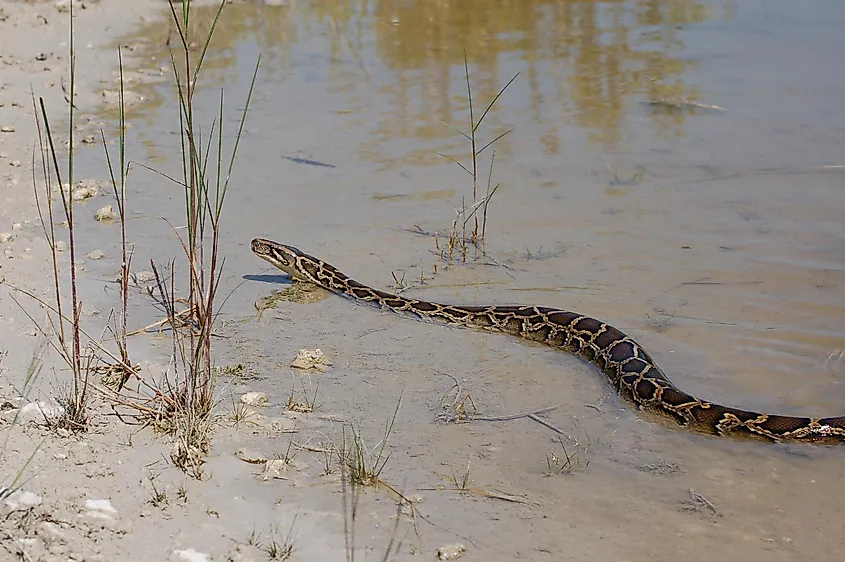
The large and powerful Burmese python has dominated the Florida Everglades for several decades. Because of a combination of intentional releases by dissatisfied pet owners (pythons are popular exotic pets in this region) and 1992's Hurricane Andrew destroying a breeding facility (which released untold specimens into nearby swamps), the population of these snakes has grown at unmanageable rates. Given their overwhelming reproductive habits, and the fact that they can grow to over 15 feet in length and weigh over 200 pounds, these stealthy constrictors constitute one of the worst-case examples of invasive species on the planet. Everglades National Park, which includes many small lakes, has thus far taken the brunt of the invasion, but as these insatiable snakes grow in size and numbers, they are also starting to expand their domain West to Naples and Northbound to our next object of focus.
Lake Okeechobee
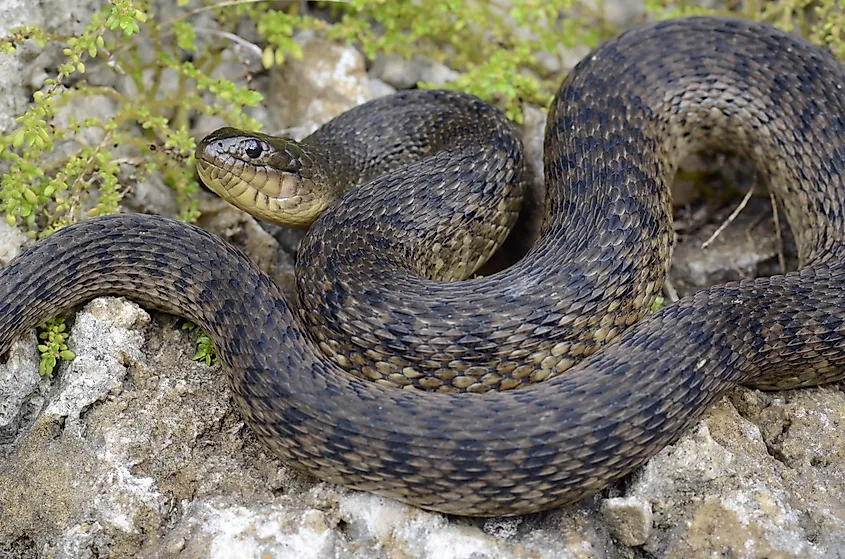
Lake Okeechobee is the largest lake in the state, the tenth largest freshwater lake in the country, and if compared to freshwater lakes contained entirely within the U.S. boundary, it becomes number two behind Lake Michigan. Also known as "Big O," or "Florida's Inland Sea," this 730 square-mile, shallow body of water sits in the South-Central part of the state, only about an hour's drive West of West Palm Beach. Lake Okeechobee is famous for its largemouth bass and speckled perch, as well as bluegills, Okeechobee catfish, and black crappies, but other less-popular creatures also lurk nearby. Central and Southern Florida has 34 or 35 native species (four of which are venomous), and three invasive species of snakes. The outbreak of Burmese pythons has even been traced to West Palm Beach and the general vicinity of Lake Okeechobee. With that said, the most commonly sighted snakes are Florida green watersnakes, brown watersnakes, the Eastern kingsnake, Brahminy blind snakes, and the Florida king snake.
Lake Seminole
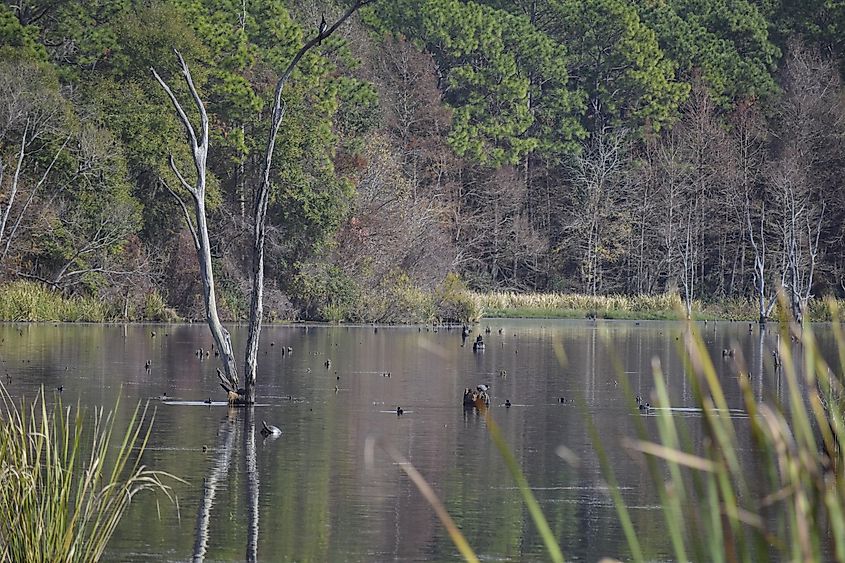
Northwestern Florida/Southwestern Georgia's Lake Seminole (not to be confused with Lake Seminole on the West coast of Central Florida) is a long and narrow reservoir and the star attraction of Three Rivers State Park. It was named after the original inhabitants of this area, the Seminole Indians, and is known as another bountiful fishing spot. But as they are wont to do, snakes seek out bodies of water. In the case of Northern Florida, this means 45 out of the state's 46 known native species and all six of the venomous varieties. Three different rattlesnakes are reported around Lake Seminole (i.e., timber, diamondback, and pygmy), as well as the cottonmouth (also known as the water moccasin), which is sometimes confused with non-venomous watersnakes. And yes, even reticulated pythons have been pulled from this area and euthanized.
Lake Iamonia
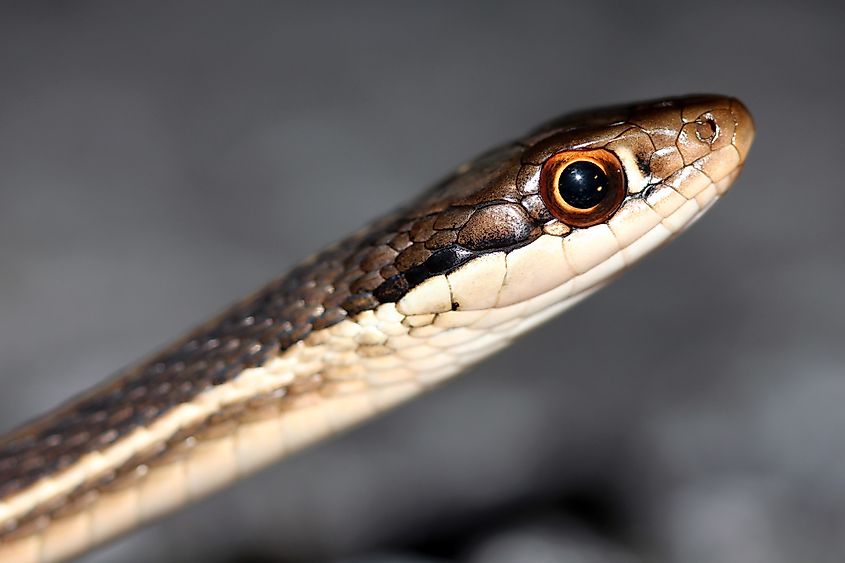
Another Northwestern Florida Lake that approaches the Georgian border is Leon County's Lake Iamonia, immediately North of Tallahassee. This seven-mile-long prairie lake drains through a natural sinkhole during dry seasons and reforms when the rains return (despite an unsuccessful attempt at damming and regulating the levels between 1939 and 1980). The presence of many alligators makes this spot unsuitable for swimming, but Lake Iamonia (which also owes its name to the Seminole Indians) is still embraced by photographers, paddlers, and nature lovers. But even if it weren't for the infamous ambush predators, visitors would want to think twice about splashing around this lake because of the healthy populations of snakes in the region. Identified species include banded watersnakes, Florida green watersnakes, cottonmouths, Eastern kingsnakes, corn snakes, red-bellied snakes, Southern ribbon snakes, ringneck snakes, and scarlet snakes.
Lake Talquin
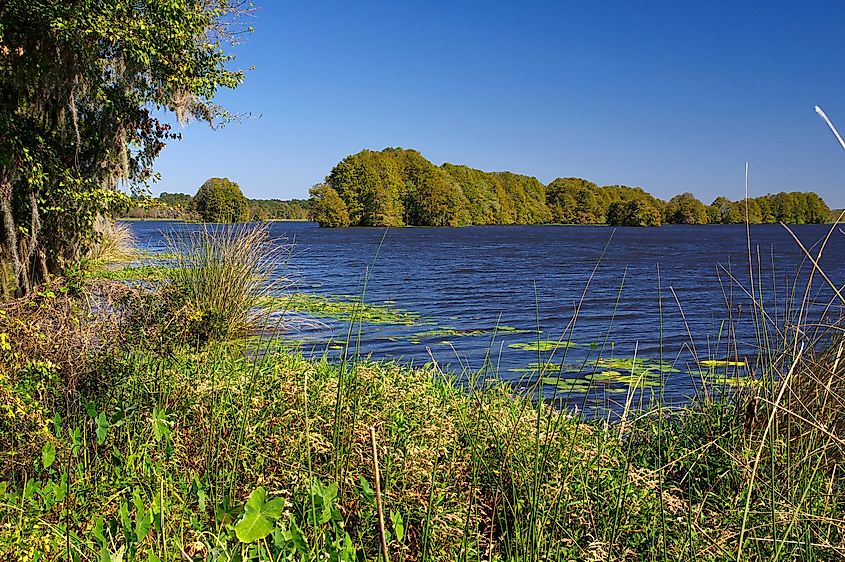
Just a little ways Southwest of Lake Iamonia and less than half an hour's drive West of Tallahassee, Lake Talquin is our final stop for snake-swarming Florida lakes. Cottonmouths, red-bellied watersnakes, and brown watersnakes are the big three commonly found in this 15-square-mile lake and around its 40 miles of shoreline. At the same time, this former floodplain-turned-manmade reservoir is exceptionally well-stocked with fish and attracts enthusiastic anglers who are evidently undeterred by the slithering company. Birdwatchers are also eager to embrace Lake Talquin and the over 100 species of birds that ebb and flow here throughout the seasons.
Snakes may strike a primal chord for many people, and they may top the list as one of the least-desired sights during a summer vacation at the lake, but they are also (for the most part) an important part of the ecosystem. The Burmese python is a notable exception, but in general, snakes help keep disease-spreading rodent populations in check and service many local species that are higher on the food chain. Snakes like to steer clear of people, and when our paths do cross, a bit of respectful distance should do the trick.










